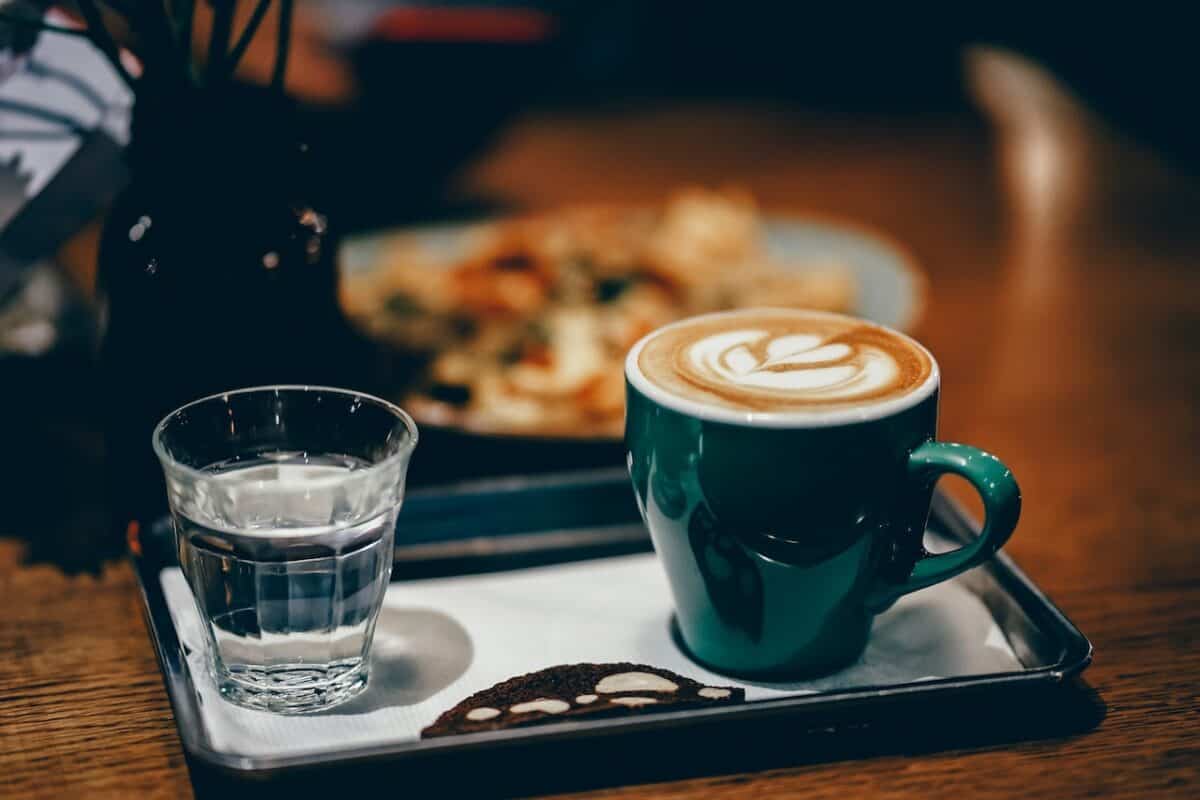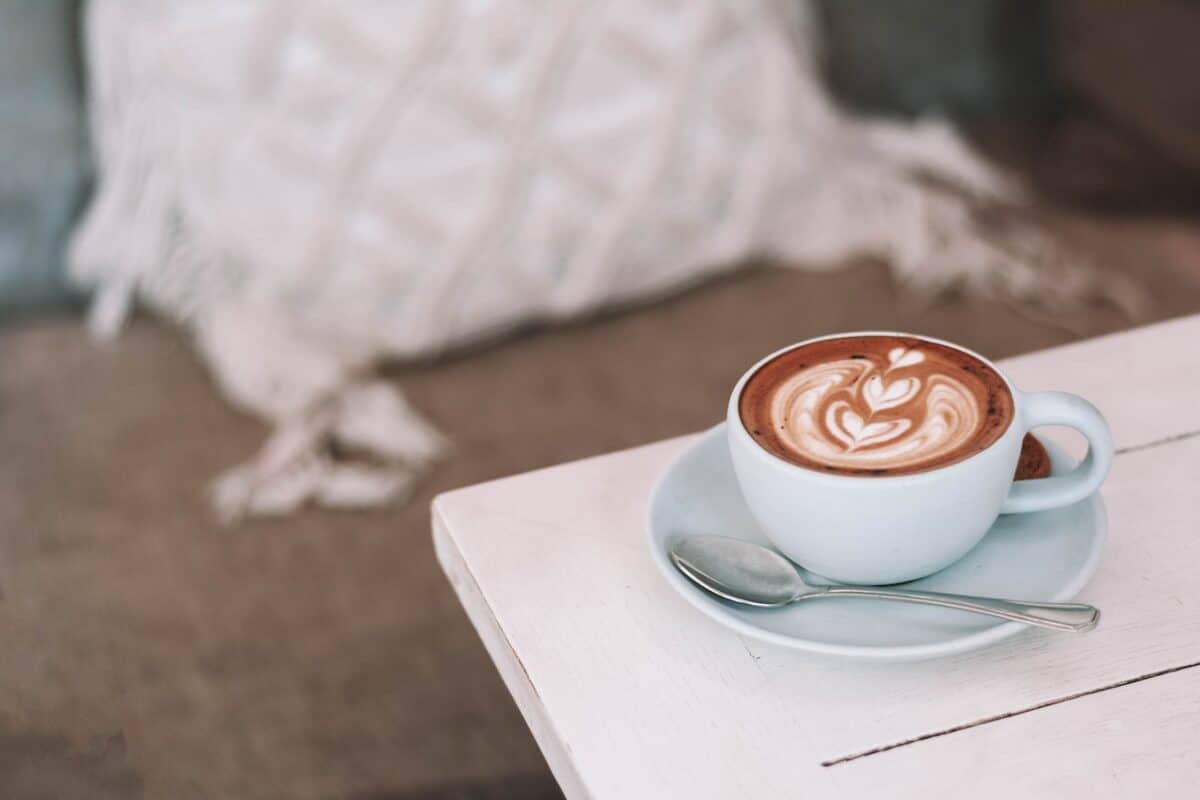Coffee and lattes are drinks that you can find everywhere. While some prefer the smoothness of black coffee, others enjoy the thickness of a latte. However, the age-old question remains – is a latte stronger than coffee?
Contents
Is a Latte Stronger Than Coffee?
The answer is found in the caffeine concentration. Typically, the single shot of espresso used to prepare a latte has less caffeine than a standard cup of coffee.

However, I must mention that lattes usually comprise multiple espresso shots, and the overall caffeine concentration can change based on the size and number of shots added.
Factors That Affect the Strength of Your Drink
Understanding how these elements affect the strength of your latte or coffee can help you create the ideal cup of coffee or latte tailored to your liking.
- Choosing the right coffee beans for your drink
- Considering the roast level
- Exploring different brewing methods
- Impact of serving temperature
Type of Coffee Beans Used
Refrain from settling for any old beans if you enjoy starting each morning with a coffee or latte. Selecting the best type of coffee beans for a latte or coffee is integral to acquiring that mouthwatering taste and energizing caffeine boost you crave.
Roast Level
As coffee beans go through the roasting process, they begin to experience a weight reduction. The longer the beans are roasted, the lower their caffeine levels drop. Darker roasts, which typically weigh less than lighter roasts when measured by mass, also have lower caffeine content.
Thus, when considering the strength of coffee based on the amount of caffeine per cup, darker roasts may not necessarily be as strong as their light roast peer.
Brewing Method
Every coffee brewing method has its own characteristics, which then influence the strength and taste notes of the drink. For instance, espresso is notorious for packing a punch with its strong and bold taste, while drip coffee is more relaxed and casual.
The drip coffee method is regarded for its mellow and approachable taste, mainly sought by those who want a smooth and casual coffee-drinking feel.
Serving Temperature
The temperature at which you serve your brew can have a big role in the solubility of caffeine. Higher temperatures have a remarkably higher quantity of dissolved caffeine as compared to lower temperatures.
In addition, hot coffee has a strong aroma and taste, making it the best morning wake-up call. Cold brews are less acidic, ideal for drinkers who love a mild savor.
If you cherish a frothy latte delight, be glad to know you can drink it in both hot and cold varieties.

Why Understanding Strength Matters
Those who love the taste of coffee and are genuinely intrigued by its essence have set out to uncover the perfect mug of java. Indeed while there may be coffee lovers who enjoy an intense and robust drink, others may desire a more temperate and smoother taste.
Amid this pursuit, understanding coffee’s strength emerges as a paramount piece of the puzzle.
Beyond being just a matter of personal preference, comprehending the strength of coffee can enhance your coffee-drinking experience in the following ways.
Caffeine Content
An intricate familiarity with coffee’s strength equips you with the necessary tools to effectively moderate your caffeine intake to suit your personal tolerance and requirements.
Here is a caffeine strength comparison between a latte and coffee to help guide your choice.
- 8-ounce cup brewed coffee = 95 milligrams of caffeine
- A 12-ounce latte with a single shot of espresso = 63 milligrams of caffeine
Brewing Control
Deep knowledge of your coffee’s strength empowers you to fine-tune the brewing process (coffee-to-water ratio, grind size, and brewing time ) with much greater finesse.
This level of brewing control also gives you a sense of mastery and delight as you craft your ideal cup of joe.
Consistency
A steadfast commitment to consistency is the cornerstone of making an exceptional brew every time. To consistently achieve your preferred taste, it is vital to familiarize yourself with the strength and nuances it possesses, thus enabling you to replicate it flawlessly.
This is especially useful in bistros or coffee joints, where patrons expect a similar taste each time they visit. Consistency in strength guarantees that they receive the flavor they are used to. The result is a higher customer satisfaction rate as well as loyalty.
Pairing With Food
Coffee strength can help you see how it combines with different meals. This knowledge can improve your overall dining experience. Coffees with more robust flavors pair well with rich and savory foods, while coffees with milder flavors are better suited to delicate desserts or lighter dishes.
Differences Between Lattes and Coffee
Latte and coffee are two different beverages that are widely consumed all over the world. Despite being similar in some ways, these two incredible drinks differ in various aspects, including:
- Taste
- Cost
- Preparation
Taste
Factors such as the roast level and the brewing technique can influence the taste of coffee. Black coffee with minimal additions like sugar or milk has typically a bold, bitter, and full-bodied flavor with a taste that ranges from nutty, earthy, fruity, or even acidic.
Now if you are wondering, “Is a latte bitter”, the taste is a balance between the strong espresso flavor and the smooth, creamy consistency of milk. Steamed milk and froth tempers some of the espresso’s bitterness for a more mellow and velvety taste.
Cost
When you need caffeine and want to keep your wallet happy, go for coffee. It requires only water and coffee beans, making it relatively cheap. Lattes, on the other hand, require more ingredients, which makes them pricier.
Preparation
The preparation of a latte requires more equipment, like an espresso machine and a milk frother. In contrast, coffee can be brewed using a simple coffee maker. If you enjoy the artistry and precision of crafting a latte, it’s worth investing in the equipment.
When assessing the preparation process, one might wonder, “Is latte the same as chai?” The answer is no. Chai is prepared by boiling black tea with aromatic herbs and spices in a simple pot.
Are There Health Benefits to Drinking Coffees and Lattes?
Drinking coffee regularly can have some significant health benefits! Coffee can aid in controlling physical movements in Parkinson’s disease patients.
Coffee usage can also lower the chances of contracting colon cancer by up to 25%. Consuming two to three cups daily also helps reduce dementia and Alzheimer’s disease risk.

Related Questions
Can You Make a Latte With Regular Coffee?
Making a latte with regular coffee is possible by using steamed milk and creating a layer of foam on top. While it may not be the traditional latte, it can still be a delightful and flavorful substitute.
Is a Latte Just Coffee With Milk?
A latte is not simply coffee with milk. Although coffee may be a component of some lattes, the drink usually consists of espresso, steamed milk, and sometimes syrup or cream. This blend of ingredients creates a distinctive taste that sets it apart from regular drip coffee.
How Much Milk Is in a Latte vs Coffee?
A latte typically contains more milk than coffee. For a perfectly balanced latte, use around one-third espresso and two-thirds steamed milk. Finish with a thin layer of frothy milk foam on top. In comparison, if you prefer regular coffee, you may add milk or cream, which is unnecessary.
Conclusion
The potency of your coffee or latte is influenced by various factors like caffeine content, brewing method, roast, and serving size. If you value caffeine, regular coffee might be your first choice. However, if you desire coffee with a smoother and creamier taste, then a latte is perfect.


